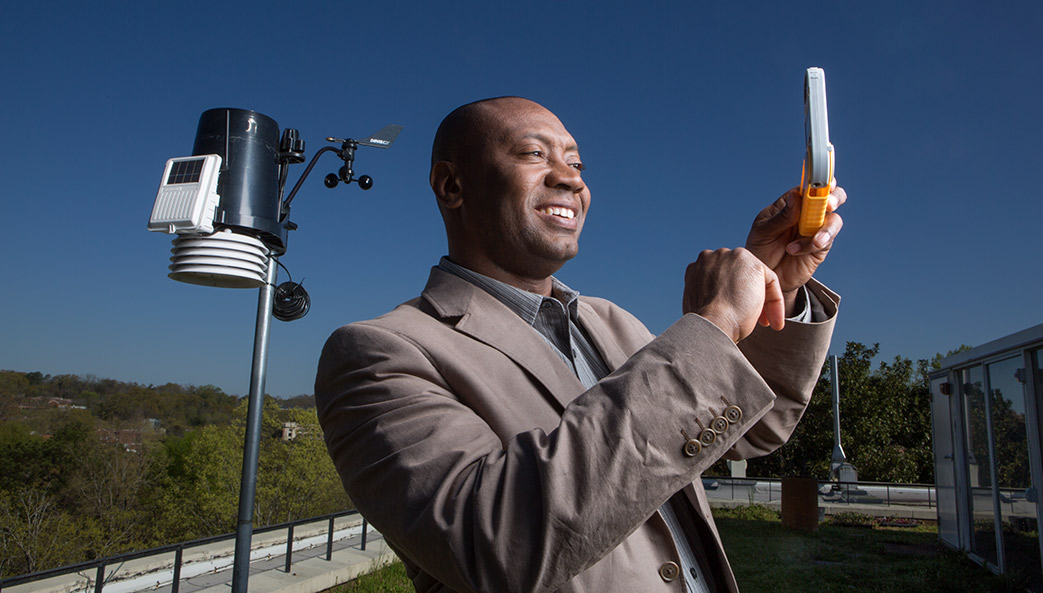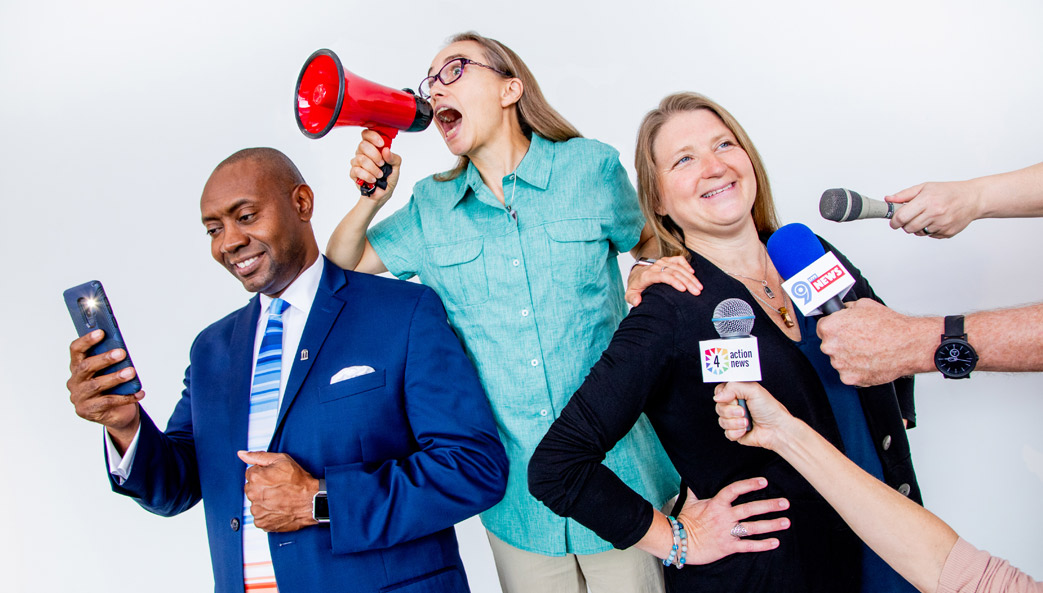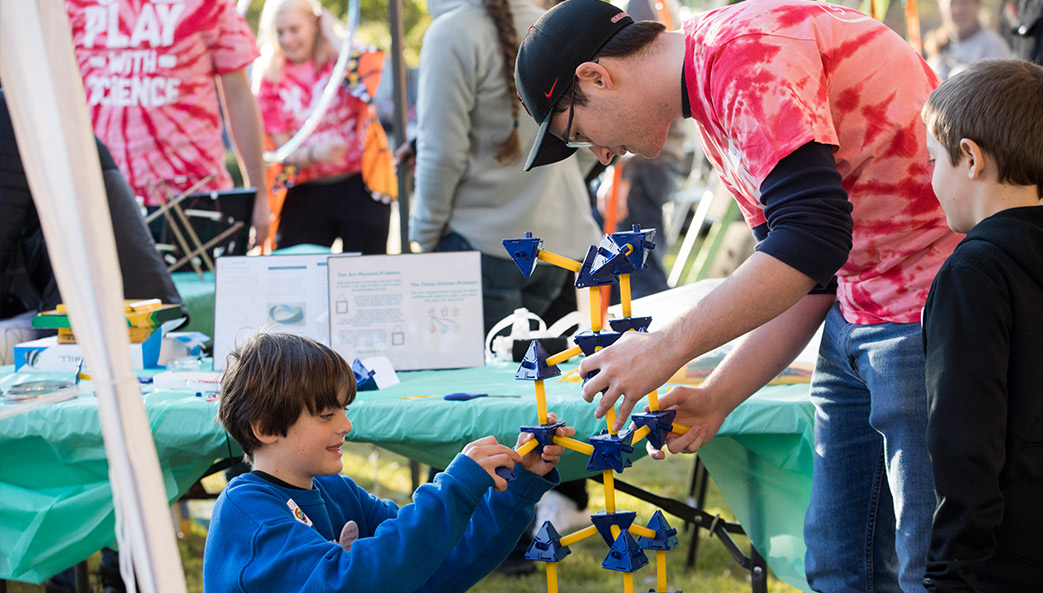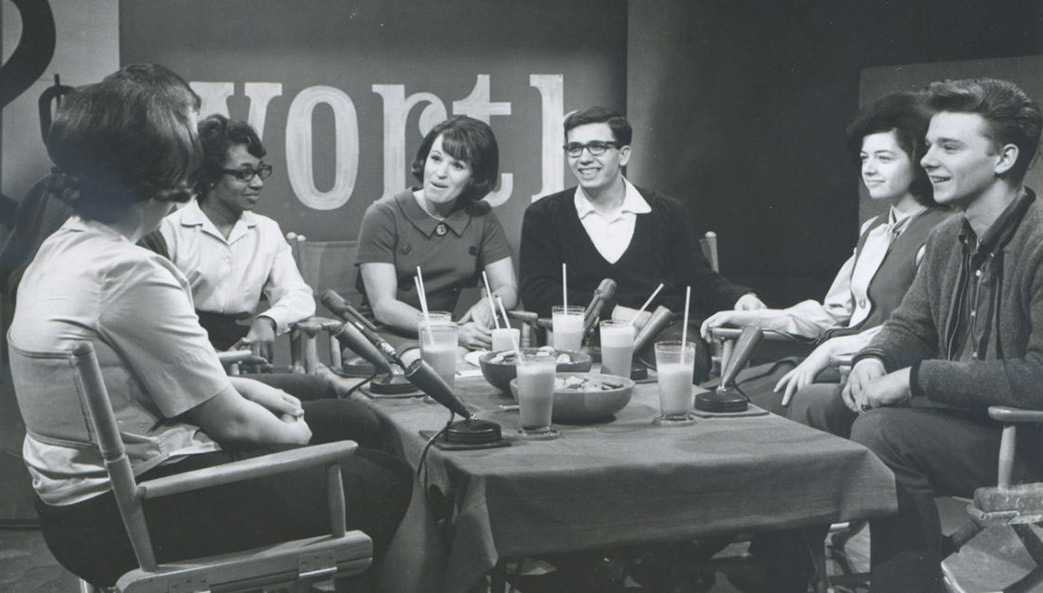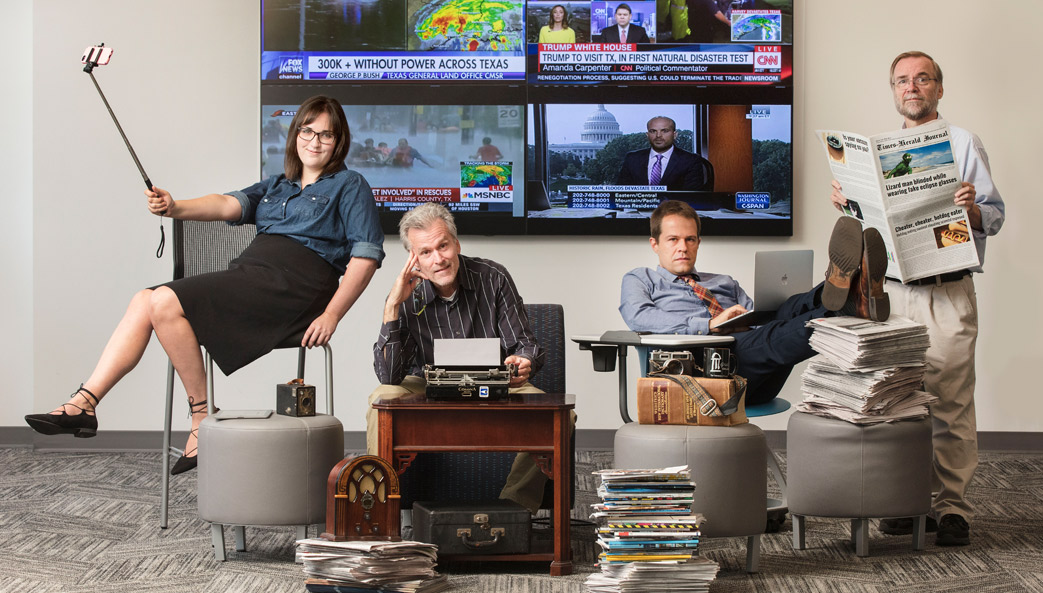New book examines racial politics of the movie industry
A Q&A with author and sociology professor Maryann Erigha
McGill Medal awarded to AP reporting team
Team of reporters honored for the coverage on civil war in Yemen
After further review…
The result of football instant replay video reviews can alter a consumer’s perception of a brand
UGA’s Marshall Shepherd featured as a TED Talk
Shepherd explains how confirmation bias impacts what we think we know
The art of communicating about science
They’ve been misunderstood, misquoted and even attacked, but three of UGA’s frequent media experts explain why they keep giving interviews
Get in the zone
Photo by Andrew Davis Tucker
Undergraduate student Andy Hardy interacts with children in the Math Zone, part of the STEMzone event held before last fall’s UGA-Auburn football game. STEMzone was created in 2017 by Reni Kaul, a Ph.D. student in ecology, to provide a venue for STEM students and organizations on campus to share their research with the public. “Scientists want others to know how our research fits into our greater understanding of the world and how it can be used,” she says. “Events like STEMzone provide opportunities to engage with people we might never come into contact with otherwise.” The university is devoting major resources to improving STEM facilities on campus, breaking ground on the $65 million I-STEM Research Building in November.
This brief appeared in the spring 2019 issue of Research Magazine. The original story is available at https://news.uga.edu/stemzone-2018/.
Grady College relaunches resource for reporters covering community poverty issues
CoveringPovertyToolkit.com is an online directory of content related to writing and reporting about poverty in communities
UGA Libraries to preserve local public broadcasts
Federal grant will help provide access to award-winning broadcast archive
Making sense of fake news
Experts at the Grady College of Journalism and Mass Communication break it down
Making sense of fake news
Experts at the Grady College of Journalism and Mass Communication break it down
Research finds consumers are more accepting of native advertisements
The line between online content written by journalists and story-like ads that are paid for by specific corporations can be blurry, but consumers don’t seem to mind-as long as the content meets certain criteria.





